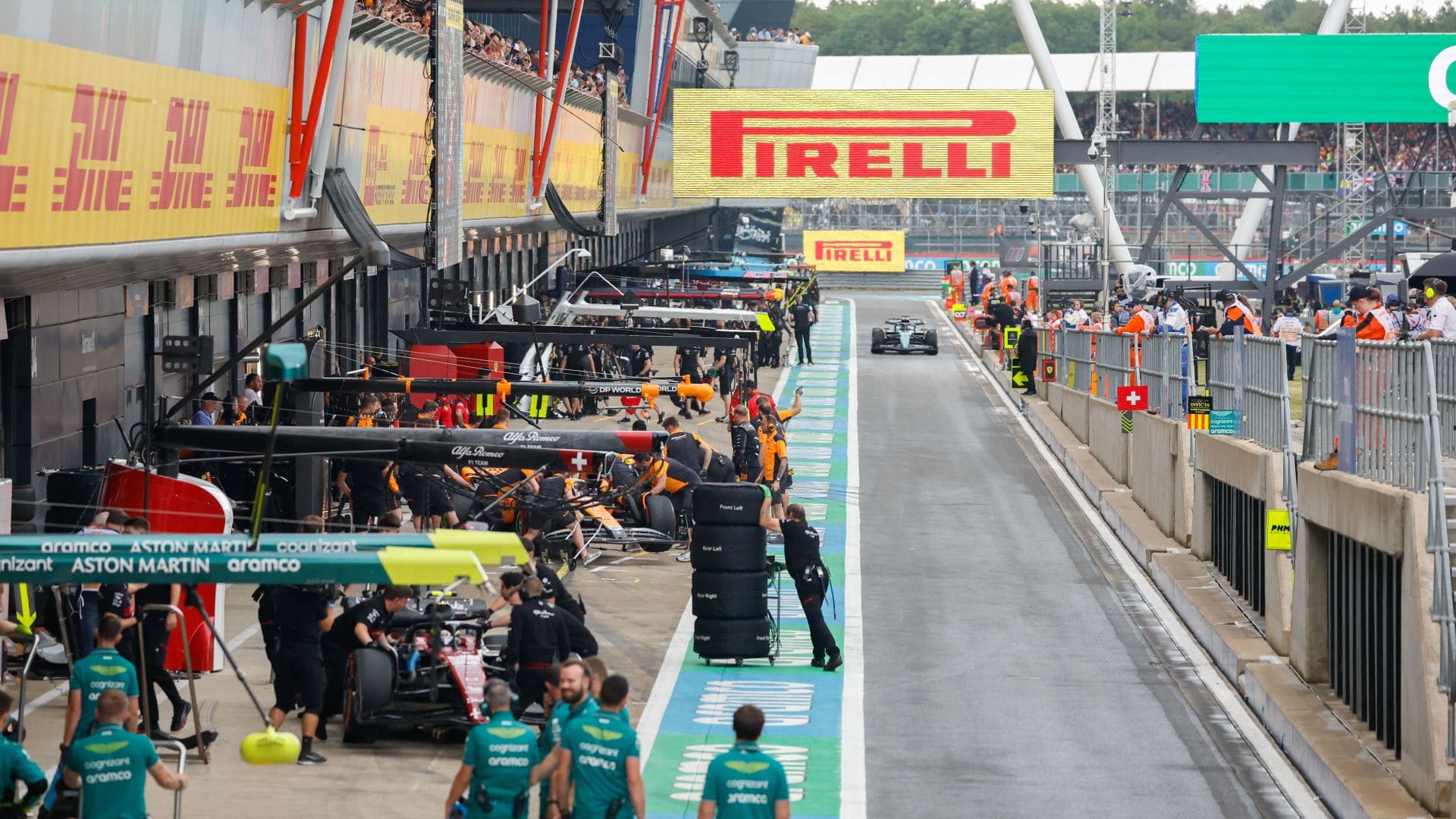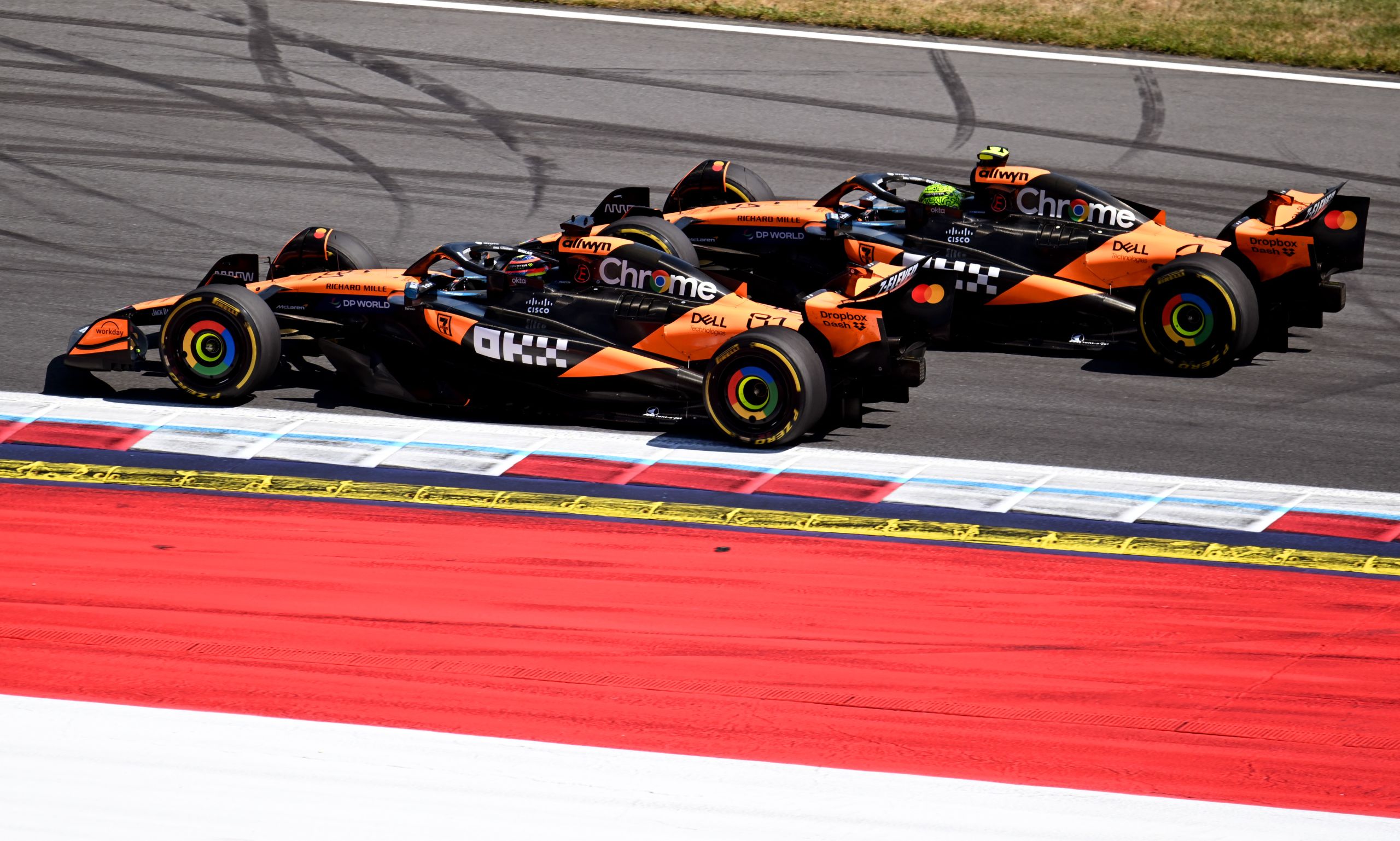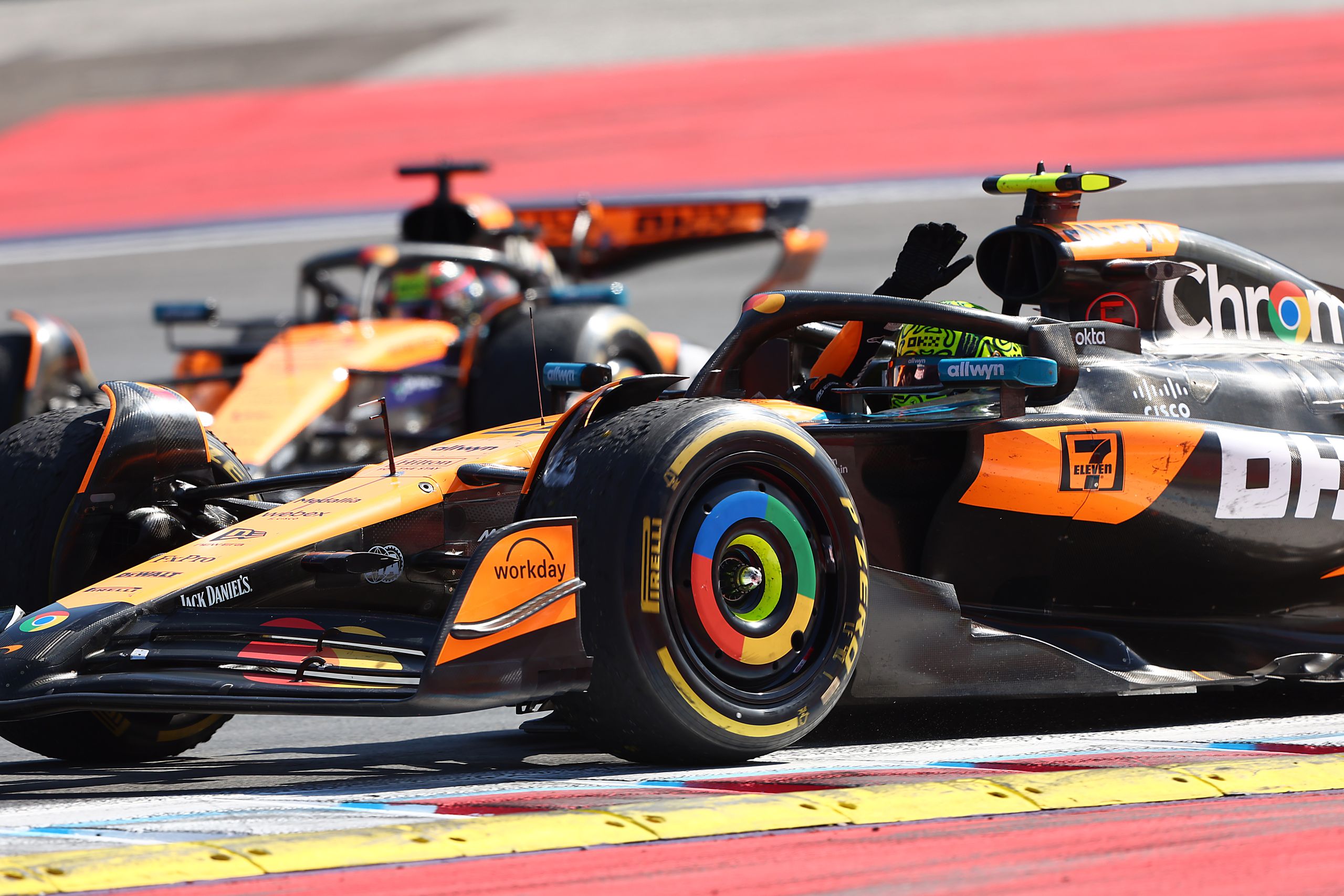How Long Is Formula 1 Break?


You, like many other Formula 1 fans, might be curious about how long the Formula 1 break lasts. This is the period where the thrill of the race gives way to anticipation for the second half of the season.
The Formula 1 break, also known as the F1 Summer Shutdown, typically lasts for two full weeks. It usually starts at the end of July, and ends in August, during this two-week period no F1 activities may take place by the teams and their staff.
In this article, we will delve into what transpires during this break, how teams and drivers utilize this time, and the historical reasons for this pause. You’ll learn about the regulatory constraints, the pre-season tests, and how the offseason impacts the following season.
How Do F1 Teams Prepare for the Summer Shutdown?
The Formula One (F1) mid-season shutdown is a unique and important aspect of the racing calendar, providing a much-needed reprieve for teams and personnel. Enforced for several years now, the two-week break gives everyone involved a chance to pause and unwind from the often intense and relentless nature of F1. Many consider it one of the best rules implemented in the sport, as it offers a valuable opportunity to recharge both mentally and physically. Moreover, the break period presents a chance to carry out critical maintenance work and keep equipment fully serviced, enhancing overall operations.
Despite the temporary inefficiencies that inevitably result from shutting down factories and facilities, the benefits of the F1 shutdown far outweigh the drawbacks. It promotes creativity, as time away can spark new ideas and innovation. In addition, observing the necessity of proper preparation before the break gives teams a competitive edge by covering every aspect of their operations – from design and manufacturing to ensuring efficient planning for upcoming races. The shutdown ultimately allows the F1 world to take a collective breath, recenter, and return to the racing calendar revitalized and focused.
Shutdown Purpose and Importance
The Formula One in-season shutdown serves as a crucial time for all race team personnel and their families. This mandated two-week break allows team members to focus solely on themselves and their loved ones without the distractions of emails, messages, or thoughts about upcoming races. It presents a valuable opportunity for everyone involved to recharge both mentally and physically.
From an operational standpoint, the shutdown is essential as it allows for planned maintenance work on machinery and equipment. Teams often prepare months in advance for this period, ensuring they finish the last race in the best possible condition. The shutdown provides the only instance throughout the season where teams can service and maintain all their equipment in a concentrated time frame.
During the shutdown, teams are not permitted to work on designing or manufacturing parts for their Formula One cars. However, this time away from racing can also foster creativity by giving team members a chance to reset their brains and potentially generate new ideas they might not have considered previously.
Preparation is key to a successful shutdown and prompt readiness for the next race. In 2023, teams faced a unique situation with two shutdowns due to the cancellation of the China Grand Prix. Despite being allowed to work in the office, the second break offered additional time for individuals to recharge their batteries and focus on performance improvements.
Efficient planning surrounding the shutdown plays a crucial role in ensuring teams can immediately dive into preparations for the next race. Once the cars return from the previous event, the race crew comes together at the factory to practice pit stops and build the cars for the upcoming race.
The in-season shutdown holds significant importance for race teams and their personnel. By allowing for much-needed rest, maintenance, and strategic planning, teams can maximize their performance and establish a strong position for the remainder of the season.
Planning and Operations
The in-season shutdown in Formula One is a mandated two-week break that all teams must take. This period allows for race team personnel and their families to recharge, focus on themselves, and temporarily disengage from work-related tasks. Despite the potential inefficiency of stopping and restarting operations, all teams experience the same break, and it has grown to be an essential part of the season.
From an operations perspective, the shutdown is crucial. Teams plan months in advance for this break to ensure they complete the last race in the best possible condition and to perform planned maintenance work. This time enables teams to service and maintain all their machines and equipment. While design and manufacture of parts for the Formula One car are prohibited during the shutdown, it can be an opportunity for team members to foster creativity and generate new ideas.
Preparation is a critical aspect of the shutdown, especially considering the tight schedule for the surrounding races. For example, when returning from the break this season, teams have only a couple of days to build the cars and ship them out for the next race weekend in Holland. This makes planning essential for ensuring a smooth transition from the end of the shutdown to the preparation for the next race.
During the 2023 season, teams faced an additional challenge, having to accommodate a second shutdown due to the cancellation of the China’s Grand Prix. While they were allowed to work in the office, the extra break provided more time for recharging batteries.
In some cases, the winter shutdown may pose even greater challenges than the in-season one. This is because, while in the summer the teams focus on race-to-race developments, they must design, manufacture, and assemble a brand new car during the winter break. To maintain the same amount of time for these tasks, teams must consider the additional shutdown week in their planning.
By carefully planning and managing operations around the shutdown, Formula One teams can make the most out of this mandatory break, ensuring they maintain their competitive edge while also providing much-needed rest for team members and their families.
Restrictions and Creativity
The F1 in-season shutdown imposes certain limitations on teams, but it also offers opportunities for creativity. During this mandated two-week break, teams are not allowed to engage in Formula One activities, including the design and manufacture of parts for their cars. While this may appear to obstruct progress, it actually allows team members to step back, reset their minds, and often generate innovative ideas.
When individuals manage to take a genuine break from their work and focus on other aspects of life, they can return with fresh perspectives and enthusiasm. Interestingly, the shutdown’s restrictions on Formula One activities may indirectly cultivate creativity, as some unique ideas may arise when team members have the time and mental space for reflection.
The shutdown period, however, comes with its challenges. Some car components, such as a front wing, can take six to eight weeks to develop, and the two-week shutdown must be factored into the overall development timeline. Nonetheless, preparation is crucial for ensuring the team’s readiness to face the remainder of the season, as races often follow closely after the shutdown period.
The timing of the shutdown is another important consideration. Teams must meticulously plan when to stop and resume work 14 days later to optimize efficiency and maximize available time for preparing for the next event. In addition to prioritizing the development of their cars, teams need to coordinate pit stop practices and assemble the vehicles for the next race.
Despite the imposing restrictions, the in-season shutdown serves a vital purpose in enabling team members to recharge and maintain a work-life balance, ultimately contributing to their overall performance and personal well-being.
Administration and Preparation
The Formula One in-season shutdown is an essential period for teams and their personnel. It allows them to focus on themselves and their families without interruptions from work-related communications. This two-week break is crucial for recharging batteries and maintaining work-life balance.
From an operational perspective, the shutdown is highly important as well. Teams plan for this period several months in advance, ensuring they finish the last race in the best possible condition. The shutdown also provides the only opportunity during the season to carry out planned maintenance work on equipment and machinery.
During the shutdown, teams are not allowed to work on the design and manufacture of parts for their Formula One cars. However, this break away from work can inspire fresh ideas and unique solutions to challenges faced in the sport. The personnel, as a result, may mentally explore various intriguing prospects during this time.
Before the shutdown begins, teams must ensure all administration tasks are covered for the next event. This includes implementing a buddy system to double-check work and confirm that all necessary boxes have been ticked. In Formula One, the goal is to be better than competitors, which often boils down to finding around a tenth of a second per race improvement. The shutdown does affect this performance development, but the impact is equal for every team.
Some car components, such as front wings, can take up to six to eight weeks to develop, with the two-week shutdown included in the timeline. Preparation becomes critical in these cases, especially when teams are expected to participate in a race immediately after the shutdown. For instance, the 2023 season includes a race in Spa before the shutdown and another race in Holland just a few days after the break.
Planning around the shutdown, even choosing the time it occurs, is crucial for keeping teams running smoothly. Detailed plans are created to ensure that operations resume immediately after the shutdown ends. This includes having team members present and ready to work on preparations for the next race event.
The shutdown is no exception to the constant pursuit of performance improvements in Formula One. Teams meticulously plan the transition from one race to the next, ensuring everything is in place for continued success after the break. In the winter, the shutdown presents an additional challenge as teams must develop a brand new car within the same timeframe as previously, factoring in an extra week for the shutdown. This requires diligent planning to design, manufacture components, assemble the car, and get it to the track on time.
Performance Development and Timeline
The F1 in-season shutdown plays a vital role in the performance development and timeline of the race teams. Before the two-week break, teams must be well-organized and prepared for the next race, ensuring that all administration is covered. This requires a buddy system, where team members double-check each other’s work to guarantee that everything is in order.
A common goal in Formula One is to find and develop about a tenth of a second per race, which usually happens every two weeks. Due to the shutdown’s effect on this development process, teams face a challenge in maintaining their progress. For instance, certain car components, like a front wing, may take six to eight weeks to develop, with a two-week gap during the shutdown.
Teams must put extra effort into preparation since they have only a few days to build and ship the cars after the mandated break. This crucial stage is the key to maintaining a high level of performance during the second half of the season.
The timing of the shutdown is vital, as the teams have to choose when to stop and when to resume work 14 days later. This is carefully planned, making sure that staff is well-prepared to start preparing for the next race immediately after the shutdown ends.
In the 2023 season, there was an additional shutdown period due to the cancellation of the China’s Grand Prix. This break allowed for some time to recharge the batteries, ensuring continued performance improvement even when faced with unexpected obstacles.
Both the in-season and winter shutdowns pose challenges to the teams. While the in-season shutdown impacts the development of individual car components, the winter shutdown affects the timeline for designing and manufacturing new vehicles. As a result, teams have to carefully plan these weeks to maintain their competitive edge on the track.
Seasonal Shutdowns Comparison
The seasonal shutdown has become a unique aspect of Formula One racing. All teams are mandated to take a two-week break, during which they cannot engage in any Formula One activities. This rule has been in place for several years and is considered by many to be one of the best additions to the sport.
The shutdown serves as a crucial period for race team personnel and their families. It allows for a focused two-week respite without interruptions from work-related communication, enabling everyone to recharge their batteries. Although there may be some inefficiencies in shutting down the factory and restarting it, all teams face the same constraint, allowing for a level playing field.
In terms of operations, the shutdown is essential for planned maintenance work. Teams plan months in advance to ensure the best possible conditions before the break. The pause in the season offers an opportunity to service and maintain all machines and equipment, which would otherwise be difficult to achieve during the busy racing calendar.
While designing and manufacturing parts for the Formula One car during the shutdown is prohibited, the break can foster creativity. Resetting the mind and taking a step back can lead to new ideas that might not have otherwise emerged, allowing for innovations in racing.
Preparation is a key aspect of the shutdown’s success, especially considering the tight schedule that follows. For instance, after racing in Spa, teams must immediately prepare for another race weekend in Holland, meaning they only have a few days to build and ship the cars upon their return from the break.
In 2023, there was an unexpected second shutdown due to the cancellation of the China Grand Prix. Although teams were permitted to work, the extra time allowed for an additional period of rest and recharging.
The seasonal shutdown serves a vital role in allowing teams to regroup and focus on their long-term goals. Comparing the summer and winter shutdowns, the primary difference lies in the car development goals. During the summer, teams develop the car race-to-race, while in the winter, they focus on designing a new car, making the shutdown even more critical to manage carefully. With meticulous planning and a clear understanding of the shutdown’s purpose, Formula One teams can continue to strive for success in their highly competitive field.
Post-Shutdown Activities
After the two-week mandated F1 shutdown, teams resume their activities, focusing on various tasks to ensure they’re prepared for the upcoming races. One crucial aspect of post-shutdown operations is conducting planned maintenance work on machines and equipment. These activities can only be completed during this period when the factory is closed, allowing for essential servicing and maintenance.
During the shutdown, design and manufacture of Formula One car parts are not allowed. However, this break can inspire creativity among team members. Sometimes, taking a step back and resetting one’s mind can lead to innovative ideas that might not have surfaced otherwise.
Preparation is key for a smooth transition back to work after the shutdown. With races in Spa before the break and in Holland immediately after, teams only have a couple of days to rebuild the cars and ship them out for the next event. Being well-prepared for these scenarios is critical for success during the tail end of the season.
Deciding when to initiate the shutdown is also a strategic decision. A well-planned schedule ensures that team members can efficiently resume their tasks immediately after the break ends. As soon as the shutdown is over, the race team crew returns to the factory to build the cars for the next event, engage in pit stop practices, and polish their skills to ensure they are ready for the upcoming race.
In 2023, teams experienced an additional shutdown due to the cancellation of the China Grand Prix. Although the office remained open, this extra break provided an opportunity for team members to recharge their batteries.
The winter shutdown poses unique challenges when compared to the summer break. Teams must contend with developing a brand-new car during the winter months, requiring careful planning to allocate adequate time for design, manufacturing, and assembly before the vehicle hits the track.





